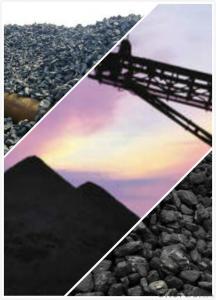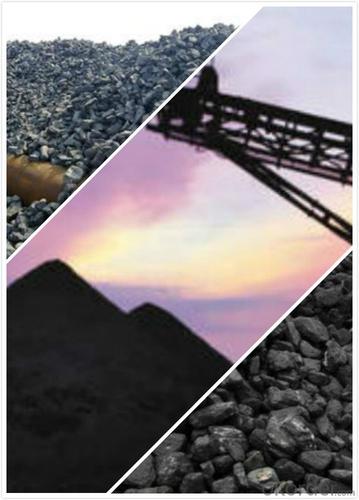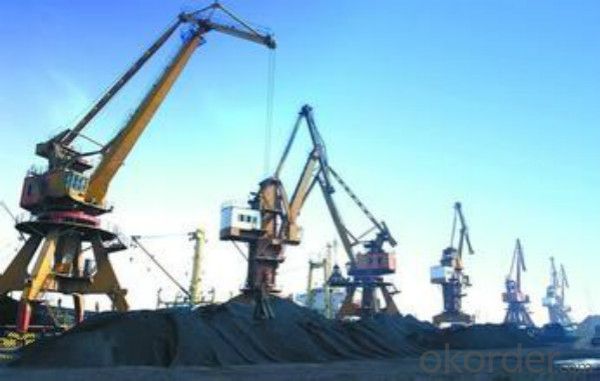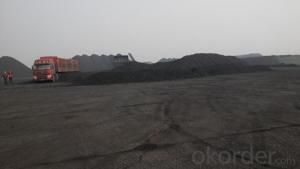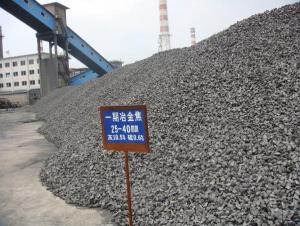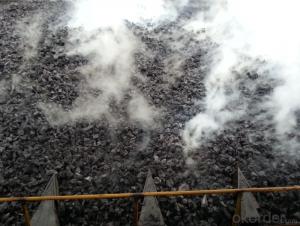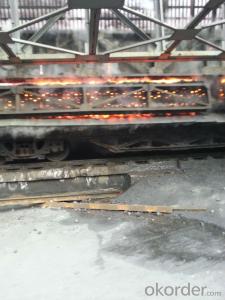S 0.6 Low Ash Metallurgical Coke or Met coke
- Loading Port:
- Qingdao
- Payment Terms:
- TT OR LC
- Min Order Qty:
- 1000 m.t.
- Supply Capability:
- 20000 m.t./month
OKorder Service Pledge
OKorder Financial Service
You Might Also Like
Product Description
Met Coke is a carbon material resulting from the manufactured purification of multifarious blends of bituminous coal. its medium-grade composite contains a high occurrence of unstable components. We can provide products in our general specifications or as customers' requirement. We are willing to cooperate sincerely with friends from all over the world and develop together prosperously. We follow the operation philosophy of contract-abiding, trustworthy, first-rate service and to achieve mutual benefits, and win-win situation. We have established an extensive cooperation relationships with circles of international trade, industry, science and technology, and financial, which established a bridge to connect China and Internation market.
Features
It is widely used in casting and metallurgy Smelting every tons Irons need about 0.4 to 0.6ton coke. As the reducing agent in the steel-making and foundry industry. It is playing more and more important role in the steel industry.
Specification
Item No. | Ash (%) max | S (%) max | F.C. (%) min | V.M (%) max | Moisture (%) max | P (%) max | CSR (%) min | CRI (%) max | Cal.Value (≥Kcal/Kg) |
NF-M001 | 9 | 0.6 | 89.5 | 1.2 | 5 | 0.035 | 65 | 25 | 7250 |
NF-M002 | 10.5 | 0.6 | 88 | 1.2 | 5 | 0.035 | 65 | 25 | 7100 |
NF-M003 | 12 | 0.6 | 86.5 | 1.5 | 5 | 0.035 | 63 | 28 | 6900 |
NF-M004 | 13 | 0.6 | 85.5 | 1.5 | 5 | 0.035 | 60 | 30 | 6800 |
Pictures
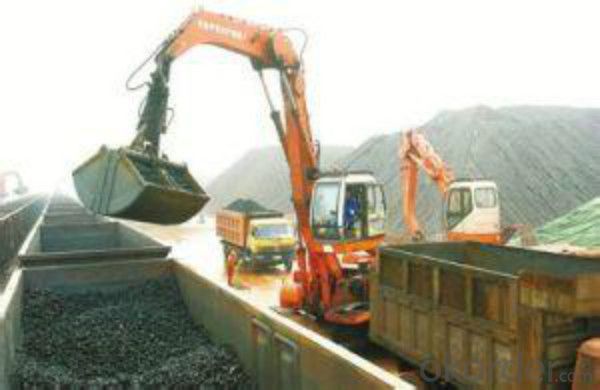
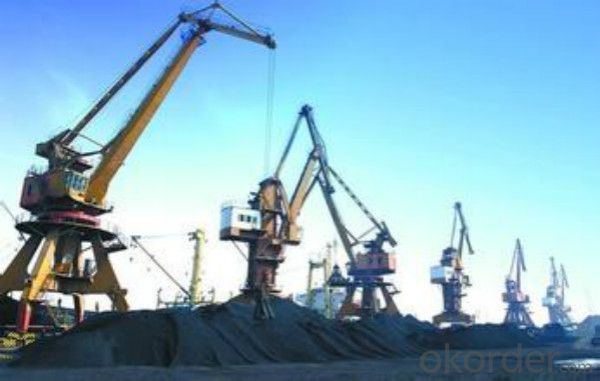
FAQ
1 What is the packing?
Packaging Details: | 1. jumbo ton bag |
2 Payment terms?
D/P, L/C,T/T with advanced payment
- Q: What is the greenhouse effect of carbon dioxide?
- The greenhouse effect of carbon dioxide refers to the process by which carbon dioxide and other greenhouse gases trap heat in the Earth's atmosphere, leading to a gradual increase in global temperatures.
- Q: What are the sources of carbon emissions?
- Carbon emissions are primarily caused by human activities that involve the burning of fossil fuels such as coal, oil, and natural gas. The largest source of carbon emissions is the burning of fossil fuels for electricity generation, transportation, and industrial processes. Power plants that burn coal and natural gas account for a significant portion of carbon emissions, as do vehicles that run on gasoline and diesel fuels. Industrial processes, particularly in sectors such as cement production and steel manufacturing, also contribute to carbon emissions. These processes release carbon dioxide (CO2) during the chemical reactions involved in the production of these materials. Deforestation and land-use changes are another significant source of carbon emissions. When forests are cleared, the carbon stored in trees is released into the atmosphere as CO2. Additionally, the loss of forests reduces the Earth's capacity to absorb CO2 through photosynthesis, exacerbating the problem. Agricultural activities, particularly livestock farming, contribute to carbon emissions through the release of methane (CH4) from the digestive systems of animals and the decay of organic matter. The use of synthetic fertilizers in agriculture also contributes to carbon emissions as they release nitrous oxide (N2O), a potent greenhouse gas. Other sources of carbon emissions include waste management practices, particularly the decomposition of organic waste in landfills, and certain industrial processes that release other greenhouse gases such as hydrofluorocarbons (HFCs) and sulfur hexafluoride (SF6). It is important to note that while carbon emissions are predominantly caused by human activities, natural processes such as volcanic eruptions and wildfires also release carbon dioxide into the atmosphere. However, these natural sources are significantly smaller compared to human-induced emissions.
- Q: What is fullerene?
- Fullerene refers to a unique form of carbon molecule that is composed of interconnected carbon atoms forming a cage-like structure. It was first discovered in the 1980s and has since attracted significant scientific interest due to its distinct properties and potential applications in various fields such as electronics, medicine, and materials science.
- Q: How does deforestation contribute to carbon dioxide levels in the atmosphere?
- Increased carbon dioxide levels in the atmosphere are significantly influenced by deforestation. Trees play a crucial role as natural carbon sinks, absorbing carbon dioxide through photosynthesis and storing it in their trunks, branches, and leaves. However, when forests are cleared or burned down for purposes like agriculture, logging, or urbanization, the stored carbon is released back into the atmosphere as carbon dioxide. The removal of trees directly diminishes the planet's ability to absorb carbon dioxide, resulting in an imbalance in the carbon cycle. Furthermore, deforestation disrupts the carbon cycle by hindering the process of photosynthesis, which is vital for converting carbon dioxide into oxygen and organic compounds. Additionally, deforestation indirectly contributes to increased carbon dioxide levels in the atmosphere through the decomposition of organic matter. When trees are cut down or burned, the stored carbon they contain is released as carbon dioxide, intensifying greenhouse gas emissions. Moreover, deforestation impacts the water cycle, leading to dryer conditions in affected areas. This causes soil to become arid, making it less suitable for plant growth and reducing the potential for carbon absorption through reforestation efforts. The cumulative effect of deforestation on carbon dioxide levels is significant. Studies indicate that deforestation accounts for approximately 10-15% of global carbon emissions, thus making it one of the leading contributors to climate change. The rise in atmospheric carbon dioxide levels, along with other greenhouse gases, contributes to the greenhouse effect, trapping heat in the atmosphere and causing global warming. To mitigate climate change and decrease carbon dioxide levels, it is crucial to address deforestation. Implementing sustainable forestry practices, promoting reforestation efforts, and protecting existing forests are essential steps in preserving carbon sinks and reducing greenhouse gas emissions.
- Q: What are the applications of carbon nanomaterials in medicine?
- Carbon nanomaterials have emerged as promising tools in the field of medicine due to their unique properties and potential applications. One of the key applications of carbon nanomaterials in medicine is in drug delivery systems. These nanomaterials can be functionalized with drugs, making them capable of targeted delivery to specific cells or tissues. The large surface area of carbon nanomaterials allows for more efficient drug loading, enabling improved therapeutic efficacy and reduced side effects. Carbon nanomaterials also show great potential in the field of tissue engineering. They can be used as scaffolds to support the growth and regeneration of damaged tissues. Carbon nanomaterials possess excellent mechanical strength and biocompatibility, making them suitable for applications such as bone and cartilage repair. Additionally, their electrical and thermal conductivity properties make them ideal for creating bioelectrodes and biosensors, which can be used for various diagnostic and monitoring purposes. Furthermore, carbon nanomaterials have been explored for their antimicrobial properties. They have shown the ability to inhibit the growth of bacteria and fungi, making them potential candidates for developing new antimicrobial agents. This could be particularly useful in preventing and treating infections in medical devices and implants. Another application of carbon nanomaterials in medicine is in imaging and diagnostics. These nanomaterials can be used as contrast agents in various imaging techniques, such as magnetic resonance imaging (MRI) and fluorescence imaging. Their unique optical and magnetic properties allow for enhanced imaging and improved detection of diseases, such as cancer. Carbon nanomaterials also hold promise in the field of cancer therapy. They can be used in photothermal therapy, where the nanomaterials are exposed to light, converting it into heat and selectively killing cancer cells. Additionally, carbon nanomaterials can be used in photodynamic therapy, where they generate reactive oxygen species upon light activation, leading to cancer cell destruction. In summary, carbon nanomaterials have a wide range of applications in medicine. They offer the potential for targeted drug delivery, tissue engineering, antimicrobial agents, diagnostic imaging, and cancer therapy. Continued research and development in this field hold great promise for revolutionizing medical treatments and improving patient outcomes.
- Q: How is carbon used in the production of batteries?
- Carbon is an essential component in the production of batteries due to its unique properties. It is commonly used as an electrode material in both primary (non-rechargeable) and secondary (rechargeable) batteries. In primary batteries, carbon is used as a cathode material. It acts as a host for the chemical reactions that occur during the discharge process, enabling the flow of electrons. Carbon's high conductivity is crucial in ensuring efficient electron transfer, allowing the battery to deliver power effectively. Additionally, carbon's stability and low reactivity make it an ideal material for long-lasting primary batteries. In secondary batteries, such as lithium-ion batteries, carbon is utilized in both the anode and cathode. The anode consists of graphite, a form of carbon that can intercalate lithium ions during charging and release them during discharging. This process allows for the reversible storage and release of energy, making graphite an excellent choice for the anode material. Carbon is also used in the cathode of secondary batteries, where it enhances the overall performance. Carbon-based materials, like carbon black, are added to the cathode to improve its electrical conductivity and increase the surface area available for reactions. This leads to higher energy and power densities, improving the battery's overall performance. Furthermore, carbon additives, such as carbon nanotubes or graphene, are being explored to enhance battery performance further. These carbon-based materials have unique properties like high surface area, high electrical conductivity, and mechanical strength, which can potentially improve the energy storage capacity and lifespan of batteries. In summary, carbon plays a vital role in battery production by enabling efficient electron transfer, storage, and release of energy. Its conductivity, stability, and ability to intercalate ions make it an essential component in both primary and secondary batteries, contributing to the advancement of energy storage technology.
- Q: What's the difference between coal and carbon?
- Difference can be big, one is coal, one is carbon, at least the price is not the same
- Q: What kind of industry does high-performance carbon fiber belong to?
- High performance carbon fiber is used in many industries, such as automobiles, bicycles, and even the aviation industry.. If you look at the industry type, many industries have high-performance carbon fiber figure, if divided by the industry attributes, should belong to the emerging industry, the future potential of the industry
- Q: How does carbon dioxide affect the formation of clouds?
- Carbon dioxide plays a significant role in the formation of clouds through its impact on Earth's climate system. As a greenhouse gas, carbon dioxide traps heat in the atmosphere, leading to an overall increase in global temperatures. This rise in temperature alters various atmospheric processes, including cloud formation. One of the key ways carbon dioxide affects cloud formation is by influencing the water cycle. Warmer temperatures caused by increased carbon dioxide levels lead to enhanced evaporation of water from the Earth's surface. This increased evaporation results in a higher amount of water vapor in the atmosphere, which serves as the primary ingredient for cloud formation. Additionally, carbon dioxide affects cloud formation indirectly by influencing atmospheric stability and the vertical movement of air. Higher concentrations of carbon dioxide can alter the temperature profile of the atmosphere, with the lower atmosphere warming more than the upper atmosphere. This temperature difference can lead to changes in air density, causing air to rise or sink. Rising air creates conditions favorable for cloud formation, while sinking air inhibits it. Furthermore, carbon dioxide affects the size and properties of cloud droplets. Increased carbon dioxide concentrations can lead to changes in the microphysical properties of clouds, such as droplet size and concentration. Studies suggest that higher concentrations of carbon dioxide can result in smaller cloud droplets, potentially affecting cloud lifetime and precipitation patterns. It is important to note that the relationship between carbon dioxide and cloud formation is complex and still an active area of research. Scientists continue to study the intricate interactions between atmospheric gases, cloud formation, and climate change to better understand the future implications of carbon dioxide emissions on cloud dynamics and the overall climate system.
- Q: other parameters are figured out, the difference is only in the carbon and carbon is not very clear, just know that they are winding mode is the opposite, there are two kinds of most printers can be used, what is the difference between the performance of them? Two can use the printer in the selection of the best carbon or carbon? Why? Please cite several models as an example.Please answer in your own words. Don't factor,
- In fact, to teach you a simple way to distinguish between internal and external carbon, carbon, label paper dip ribbon, with black on the outside of the outer side is carbon, carbon is in inside, no performance difference, now generally used is the most carbon, such as the machine is to use carbon is better, because the wound is not the same, sometimes loose.
Send your message to us
S 0.6 Low Ash Metallurgical Coke or Met coke
- Loading Port:
- Qingdao
- Payment Terms:
- TT OR LC
- Min Order Qty:
- 1000 m.t.
- Supply Capability:
- 20000 m.t./month
OKorder Service Pledge
OKorder Financial Service
Similar products
Hot products
Hot Searches
